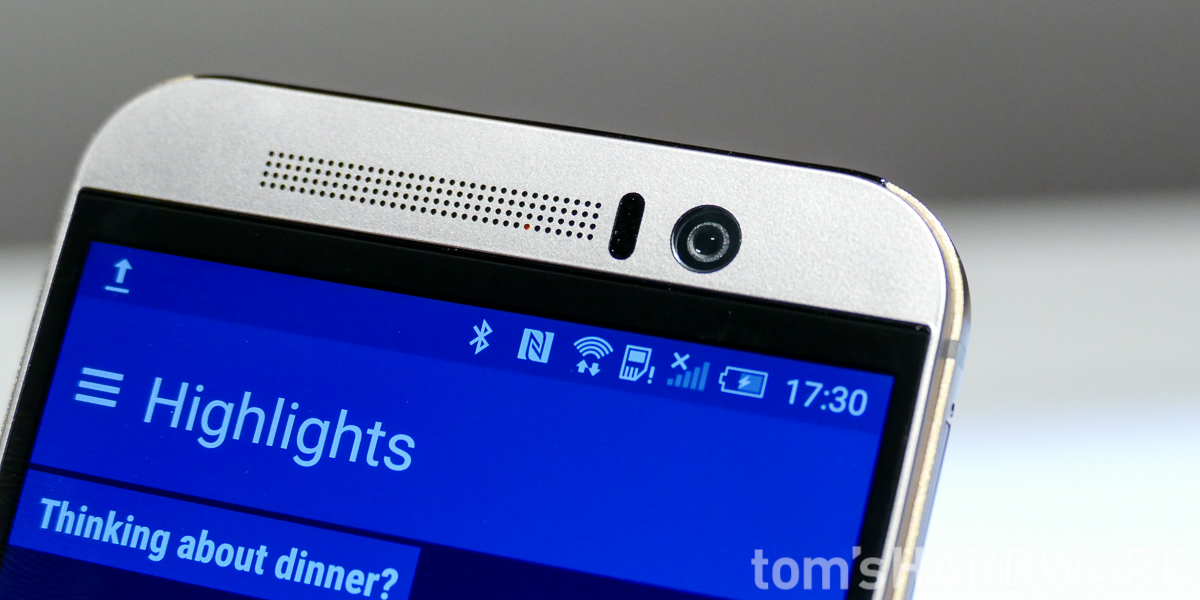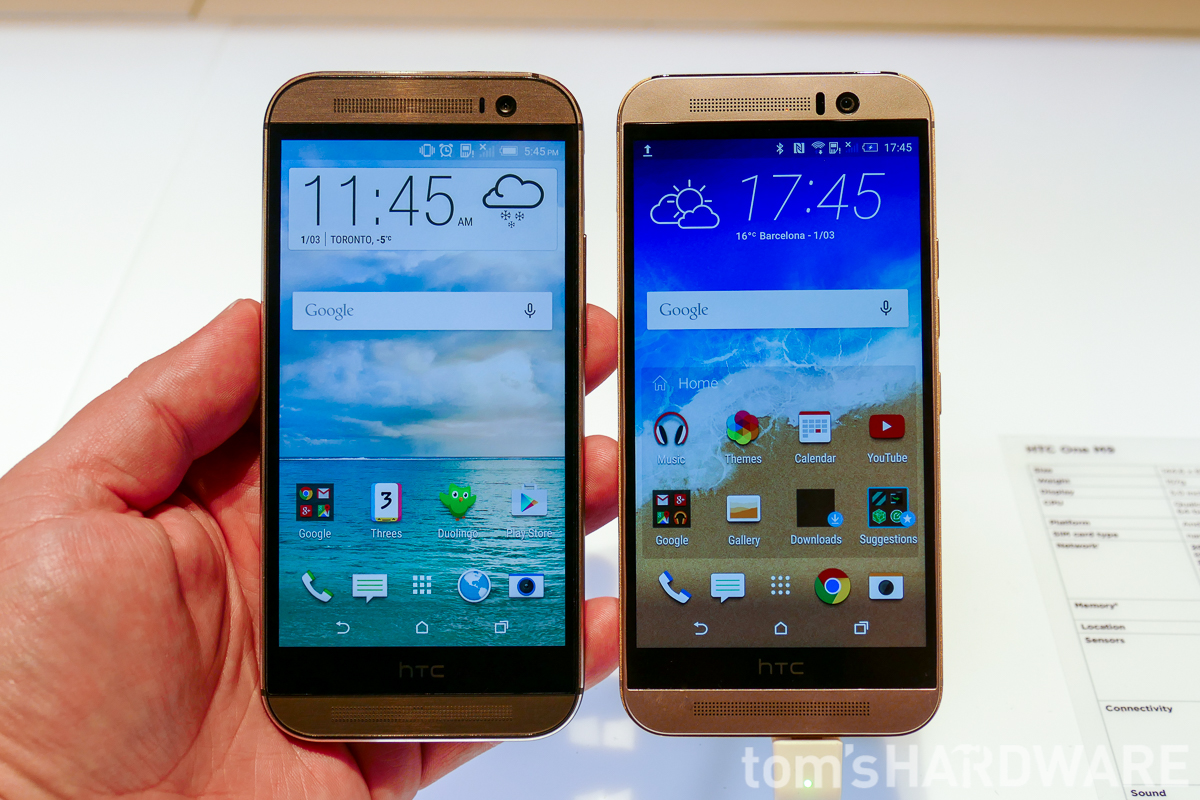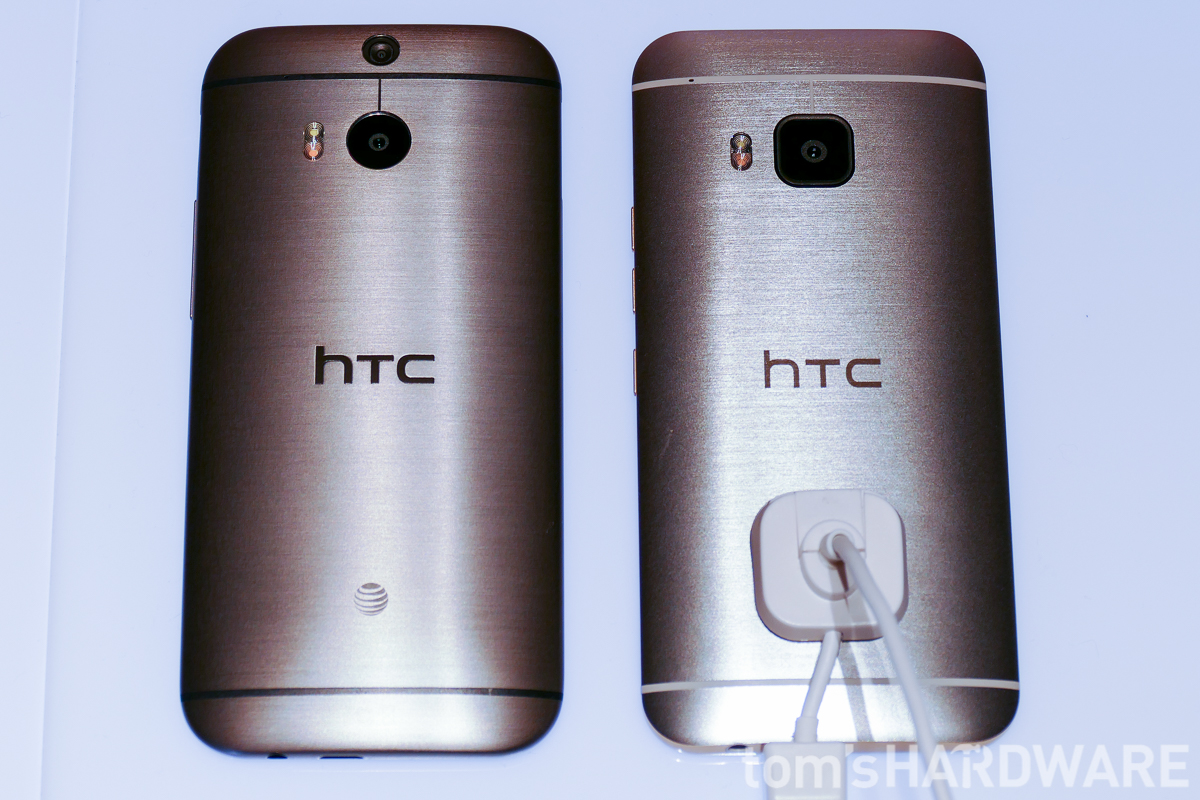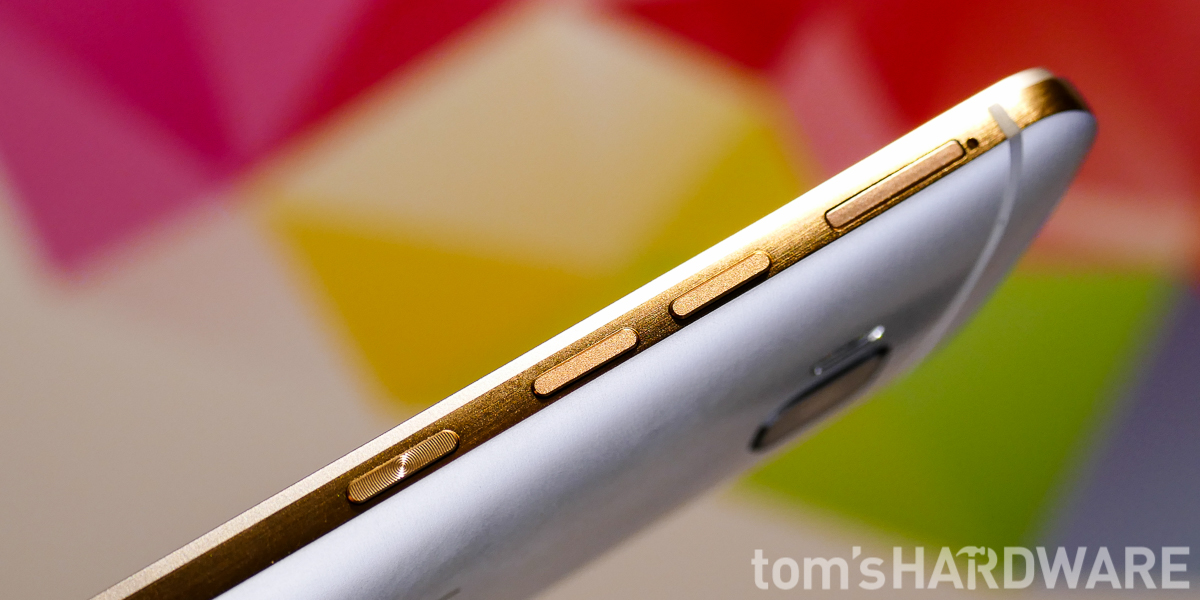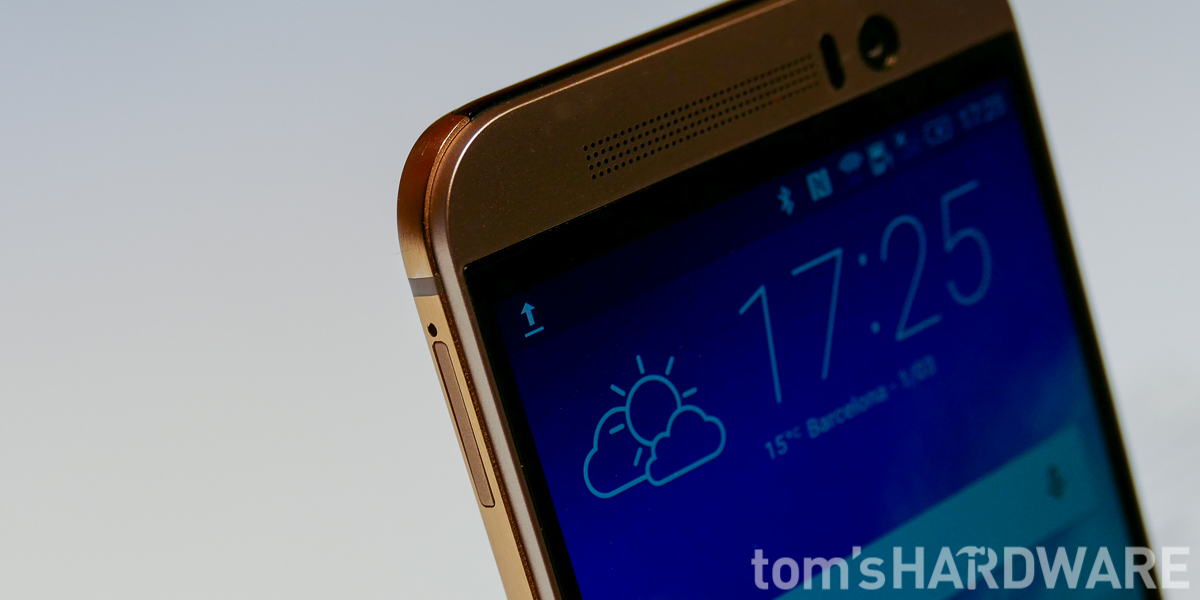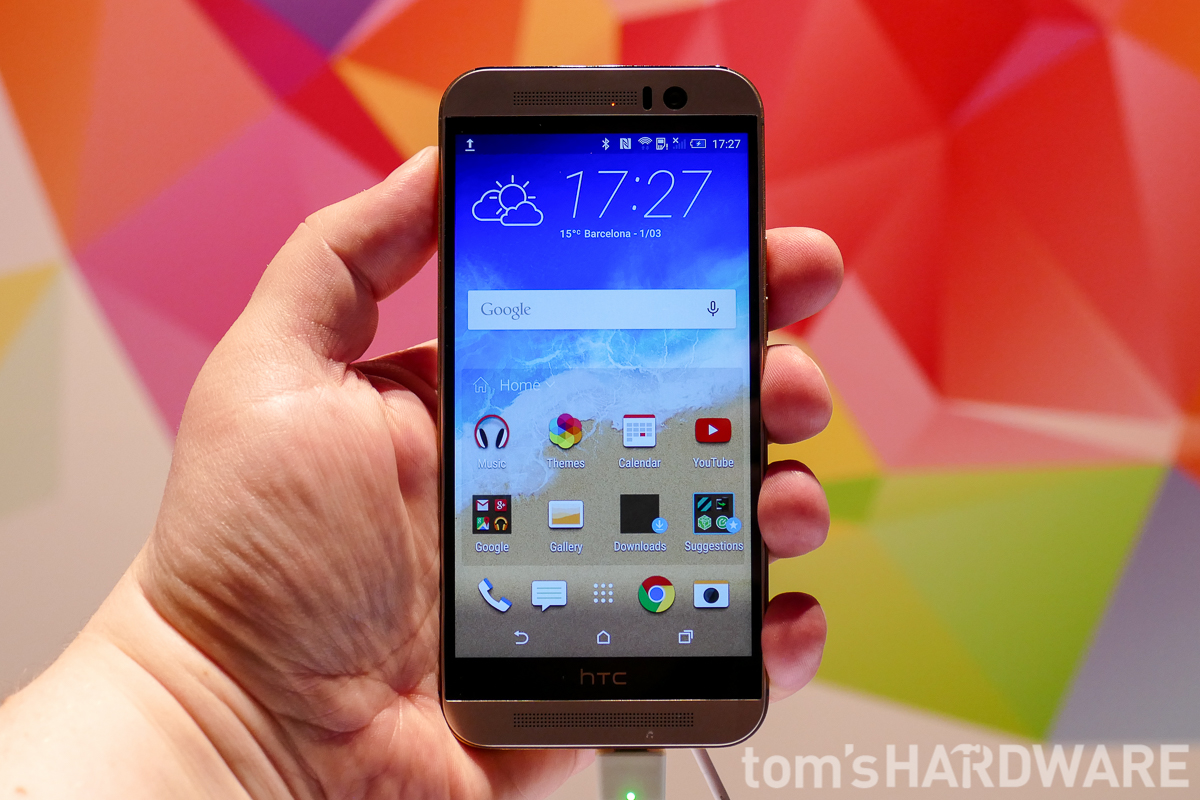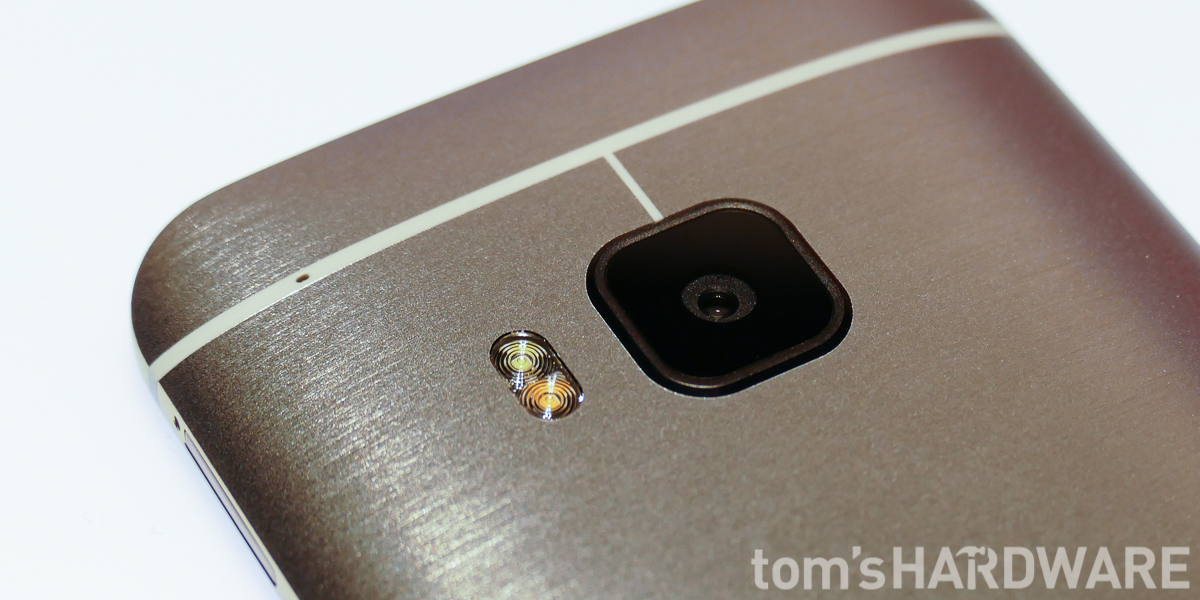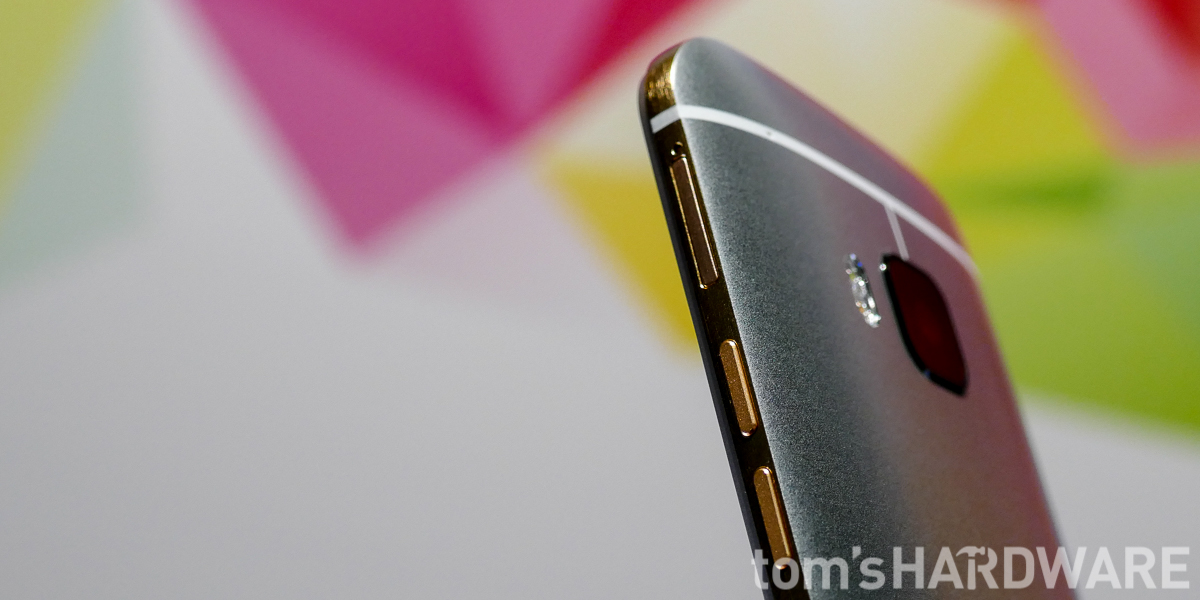HTC One M9 Available Tonight, Latest Flagship Goes Toe-To-Toe With Samsung (Updated)
Today, HTC announced that its latest flagship smartphone, the HTC One M9, will be available for sale online (on its own website) on March 27, starting at 12:01 AM ET. The device will be available in other carrier and retail stores from April 10.
The unlocked version from HTC's website will cost $649, while the models in stores will have variable prices, either unlocked or subsidized, depending on each store's pricing strategy.
Unlike its also recently-announced Galaxy S6 competitor, which was in many ways a more radical improvement after three years of slight iterations on the same concept, the HTC One M9 continues with the same line of improvements we've seen since the HTC One M7.
The design has been polished, the speakers don't occupy as much space in the front as before (a welcome improvement, as nobody likes wasted space, especially on a small device such as a smartphone), and most of the specifications have been upgraded.
Processor
The HTC One M9 is powered by a rather controversial SoC: the Snapdragon 810 from Qualcomm. That's the same chip Samsung allegedly dropped from its Galaxy S6 flagship because it overheated. There could have been other reasons for the decision as well. However, the fact that the Exynos 7420 inside the Galaxy S6 is made on Samsung's 14nm FinFET process, while the Snapdragon 810 was built on a TSMC 20nm planar process, gives some credence to the notion that for that level of performance, the chip couldn't be made very efficient. It was also Qualcomm's first time building SoCs using ARM's stock CPU design, and the company may not have had enough time to properly optimize it.
Display
The HTC One M9 keeps the same 1080p resolution that we saw on the HTC One M8. That's not necessarily a bad thing on its own, as a lower resolution on a certain display panel technology can save battery life. The issue here is that HTC is apparently using the same Super LCD3 panel technology as it did in the HTC One M8. That means there have likely been no improvements in battery life on the display side, compared to the HTC One M8.
When other companies adopt higher resolutions, such as the 2560 x 1440 resolution we've been seeing in some high-end phones lately, they usually go with a more efficient and more modern display panel technology to offset that increase in resolution. Then they end up with a 2560 x 1440 display that might not use any more energy than the last-generation 1080p panel used, while at the same time bringing a sharper screen to consumers.
Get Tom's Hardware's best news and in-depth reviews, straight to your inbox.
Here, HTC brought no improvement in display quality, nor in power consumption. The company simply used last year's panel to save cost, which is a benefit to HTC, but not necessarily to consumers. When deciding between their options, most consumers may still go with the higher-resolution panel.
There's still one reason why using a lower-resolution display can still be a better choice than using a more modern higher-resolution one, though. When the resolution increases, it also puts a stress on the GPU, which now needs to expend more performance to handle that higher resolution.
For years, this hasn't been much of an issue, because mobile GPUs could double in performance in every annual generation. Lately, that rate of improvement has dropped to somewhere around 50 percent or less for a 12-month generation. It's also likely to drop to a 20-30 percent rate of improvement in the near future, just as we've seen with PC GPUs. That means we won't be able to keep doubling the pixels in our phones every year (it's a 1.8x increase for 2560 x 1440 vs 1920 x 1080).
Many could also argue that a 1080p resolution is already more than enough for an LCD-based 5” screen. The benefit of having a higher resolution screen is much less than it used to be in the early days of touchscreen smartphones, while the downsides are getting larger with each new generation as the mobile GPU progress rate lowers.
Cameras
One of the bigger changes in the HTC One M9 is represented by the new 20 MP camera from Sony. For its "One" series, HTC has been using its 4 MP "Ultra Pixel" camera, which was great for low-light photography but couldn't capture too much detail in its photos. In a way, HTC went from one extreme to the other with the M9, going from a low-resolution camera to one that has among the highest resolution on the market. The new camera can even do 4K recording at 30 fps as well as 1080p recording at 60 fps, and 720p recording at 120 fps.
HTC moved its 4 MP "Ultra Pixel" camera to the front where it can record 1080p video at 30 fps and is cable of HDR.
Other specs
The HTC One M9 comes with 32 GB of storage out of the box and still supports microSD expansion (unlike the Galaxy S6) up to 128 GB. It also has 3 GB of RAM, which seems to be a common spec among the high-end flagships right now. The M9 supports LTE, dual-band 802.11ac Wi-Fi, DLNA, and Bluetooth 4.1 in terms of connectivity. The device runs Android 5.0 Lollipop with the Sense UI 7.0 customizations on top.
The HTC One M9 will be available at all four major U.S. carriers starting April 10, including AT&T, Sprint, T-Mobile and Verizon. It will also sell at Amazon, Best Buy, Best Buy Mobile specialty stores, Costco Wholesale and Target.
The device will include HTC's recently announced "UH OH" Protection, which allows customers to replace their HTC One M9 for free, if they suffer from cracked screens or water damage, in the first 12 months after purchasing it. Those who can't wait until it arrives in stores can also order it from HTC's website for $649, after 12.01 AM tonight (March 27).
Update, 3/26/15, 9:01 AM PST: The HTC One M9 will be available in Canada on April 17 starting at $199 on a 2-year term from Bell, Koodo, Rogers, SaskTel, Telus, Wind Mobile and Videotron. The unlocked version being sold directly by HTC is not available to Canadians.
Follow us @tomshardware, on Facebook and on Google+.
Lucian Armasu is a Contributing Writer for Tom's Hardware US. He covers software news and the issues surrounding privacy and security.
-
uglyduckling81 Who cares if it's a 1080p or some higher res, its a 5" phone ffs. It makes no difference what so ever. I would like the more efficient technology in 1080p phone for really good battery life. I watch movies on a 105" projector screen in 1080p and it looks amazing. My main concern is reducing the speaker size. That’s the main selling point for me was clear and decently loud speakers. Ever since I dropped my M8 into a spa and purchased a Z3 compact as a replacement I have been hating life. You can't hear the speakers if someone is whispering 10 metres away. I used to run audio books on the M8 while mowing the lawn, in the shower, where ever and I could always hear it.Reply -
vmem It's a fine phone otherwise, the biggest question is how good is it's new camera, and most reviews have been mixed so far... Gonna have to wait it out and see some user reviews I guessReply -
Innocent_Bystander Beyond 720P for a 5" screen it's just a marketing pissing contest about how big a magnifier you'll need before you start seeing pixels.Reply
Nonsense. -
kiniku ReplyWho cares if it's a 1080p or some higher res, its a 5" phone ffs. It makes no difference what so ever. I would like the more efficient technology in 1080p phone for really good battery life. I watch movies on a 105" projector screen in 1080p and it looks amazing. My main concern is reducing the speaker size. That’s the main selling point for me was clear and decently loud speakers. Ever since I dropped my M8 into a spa and purchased a Z3 compact as a replacement I have been hating life. You can't hear the speakers if someone is whispering 10 metres away. I used to run audio books on the M8 while mowing the lawn, in the shower, where ever and I could always hear it.
Beyond 720P for a 5" screen it's just a marketing pissing contest about how big a magnifier you'll need before you start seeing pixels.
Nonsense.
I agree. And a battery killer. Regarding the Z3 speakers: I have that phone too and its battery life -with it's standard slim battery- has no compare. If I need "great" sound I'll plug in a Sony noise cancelling set of ear buds. -
kawininjazx My LG G3 has the quad HD display but it's hard to see the difference because all the videos are 1080p and websites don't look any different. I say 1080p is fine.Reply -
ammaross ReplyWho cares if it's a 1080p or some higher res, its a 5" phone ffs. It makes no difference what so ever.... I watch movies on a 105" projector screen in 1080p and it looks amazing.
Why would we need anything better than 1080p then! For those of us who CAN notice a difference and CAN discern 1080p pixels, even on a 5" phone, it DOES make a lot of difference. I'd love to have the M9 if it had a higher res screen. I will likely be getting it notwithstanding a 1080p screen, but it does make it a harder sale for sure. :( I do hope the 20MP camera reviews well though. -
GreaseMonkey_62 This is what I would have liked to see in the Nexus phone line. Incremental updates, hopefully in the right places. Instead every other manufacturer seems to go with a "radical" new design every generation. Manufacturers are trying to outspec or "outwow" each other. This sounds like a great phone, now to find $650 in change lying around the house.Reply -
darkchazz Actually the display has worse color calibration than the M8 and even consumes more power due to removal of Panel Self Refresh..Reply -
eltoro Compared to Samsung's whole new device effort, HTC's new model seems to be a non exciting M8 component update.Reply
Samsung has invested a lot more of the development of the S6, and the result seems to be a lot more promising than the M9. I'm even willing to forgive them for the lack of MicroSD slot and non removable battery, as in all the other categories these is a substantial improvement. -
eklipz330 yes thank you. the more people say 1080p is perfectly fine, the less pissing contests they will do im sure.Reply
or maybe not. i really do not need a 4k display on a 5" screen.
